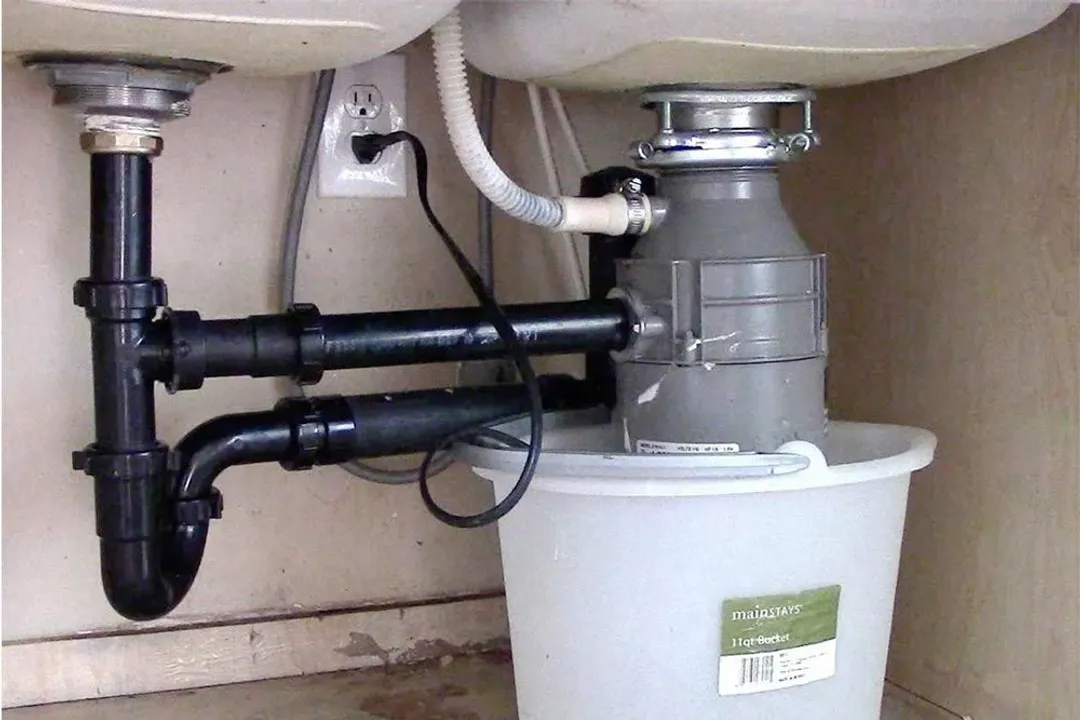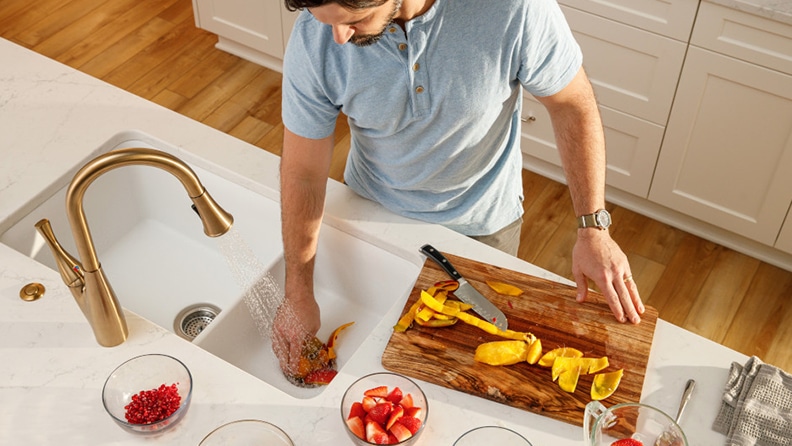Best Tips for Fixing a Leaking Waste Disposal Unit
Best Tips for Fixing a Leaking Waste Disposal Unit
Blog Article
Listed here below you might get a lot of great news around Garbage Disposal Leaking From Bottom.

Waste disposal unit are crucial kitchen area home appliances that assist in dealing with food waste effectively. Nonetheless, a dripping waste disposal unit can be a discouraging and messy trouble to take care of. The good news is, many leaks can be fixed easily with a few easy actions. In this write-up, we will certainly review just how to take care of a dripping garbage disposal successfully.
Introduction
Garbage disposals are mounted under cooking area sinks and are created to shred food waste into smaller items, permitting it to go through the plumbing system conveniently. While these tools are normally reputable, leaks can take place gradually because of wear and tear, loosened connections, or damages to the system.
Common Causes of Leakages in Trash Disposals
Worn Seals and Gaskets
Seals and gaskets play a crucial duty in stopping water from leaking out of the waste disposal unit. In time, these parts can degrade, leading to leakages around the disposal unit.
Loose Links
The connections in between the garbage disposal and the plumbing system can come to be loose with time, causing water to leakage out during procedure.
Splits or Holes in the Disposal Device
Physical damage to the waste disposal unit, such as splits or holes in the real estate, can additionally lead to leakages.
Identifying the Source of the Leakage
Before attempting to deal with a leaking garbage disposal, it is vital to identify the resource of the leakage. This can generally be done via visual assessment or by conducting easy examinations.
Visual Examination
Inspect the garbage disposal system meticulously for any indications of water leak. Pay attention to locations around seals, gaskets, and connection points.
Evaluating for Leakages
One means to examine for leaks is by running water through the disposal system and checking for any type of noticeable indicators of leak.
Devices and Materials Needed for Fixing a Leaking Garbage Disposal
Before beginning the repair service procedure, collect the needed devices and products, consisting of a screwdriver, flexible wrench, plumber's putty, replacement seals or gaskets, and epoxy or patching product for fixing splits or openings.
Step-by-Step Overview to Repairing a Leaking Waste Disposal Unit
Switch off the Power
Prior to attempting any fixings, make certain that the power to the waste disposal unit system is shut off to avoid the risk of electrical shock.
Locate the Leak
Determine the precise area of the leakage and identify the cause.
Tighten up Connections
Make use of a wrench to tighten up any kind of loose links in between the disposal unit and the pipes system.
Change Seals or Gaskets
If the leakage is because of used seals or gaskets, eliminate the old parts and change them with brand-new ones.
Patching Cracks or Openings
For fractures or holes in the disposal system, usage epoxy or an ideal patching material to seal the broken location.
Testing the Garbage Disposal After Fixing
Once the repair work is total, test the garbage disposal by running water through it to make certain that the leak has actually been settled.
Preventive Maintenance Tips to Avoid Future Leakages
To prevent future leakages, it is necessary to execute routine maintenance on your waste disposal unit. This consists of keeping it clean, staying clear of putting non-food things or difficult things down the disposal, and periodically looking for leaks or other problems.
Verdict
To conclude, fixing a leaking waste disposal unit is a relatively simple procedure that can be finished with basic devices and products. By following the actions outlined in this short article and exercising preventive upkeep, you can keep your garbage disposal in good working problem and stay clear of costly repair work in the future.
HERE’S HOW TO FIX YOUR GARBAGE DISPOSAL
WHAT TO DO IF SOMETHING IS STUCK IN YOUR GARBAGE DISPOSAL
If the impeller won’t turn, there’s probably something stuck in the disposal. It could be a steak bone or peach pit, although plumbers report pulling all sorts of inappropriate objects out of disposals, such as bottle caps or aluminum foil. Make sure power to the disposal is off, and look inside to see if you can see the source of the jam.
Never stick your fingers in a disposal. Pull out anything you see with tongs or pliers.
If the disposal still won’t work, it may be time to call a plumber or consider buying a new disposal. GEM Plumbing & Heating is here for all of your garbage disposal needs.
WHAT TO DO IF YOUR GARBAGE DISPOSAL DRAIN IS CLOGGED
Take everything out from underneath your sink and put a bucket or other container under your disposal to catch any water that drains out. Disconnect your disposal from the power supply. If it’s plugged into a wall outlet, unplug it. If it’s hardwired into an electrical box, go to the electrical panel and turn off the breaker for the disposal. Pour ¼ cup of baking soda into the drain, followed by ½ cup of white vinegar. Give the solution a few minutes to fizz and do its work. Look into the disposal with a flashlight to see if you can see an object that might be causing the clog. If you see it, remove it using tongs or pliers. MORE TIPS ON DEALING WITH A CLOGGED GARBAGE DISPOSAL
Never use drain cleaner in a garbage disposal. It can damage the plastic parts inside the disposal. You can also be splashed with the caustic liquid while working to clear the clog. Beware! Never stick your fingers into a garbage disposal. Trust us — not a good idea. In many instances, your dishwasher drains through your garbage disposal. This allows the disposal to grind any large food particles that may be drained out of your dishwasher. There are some jurisdictions, however, where the plumbing code prohibits such a connection. WHAT TO DO WHEN YOUR DISHWASHER DRAINS THROUGH THE DISPOSAL
Run some water in the sink so your plunger has at least a ½-inch of water to create a seal and plunge vigorously up and down several times. You may need to repeat this several times. Run hot water down the drain to clear any residue that remains.

Do you really like reading about Why Is ? Place feedback further down. We'd be pleased to see your reactions about this piece. Hoping to see you back again in the near future. Are you aware of somebody who is in the market for the niche? Take a moment to promote it. Thanks a bunch for your time. Please pay a visit to our blog back soon.
Book Your Service Report this page